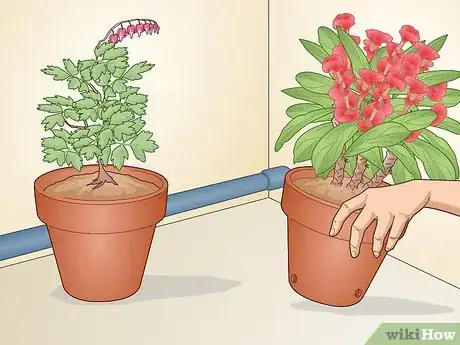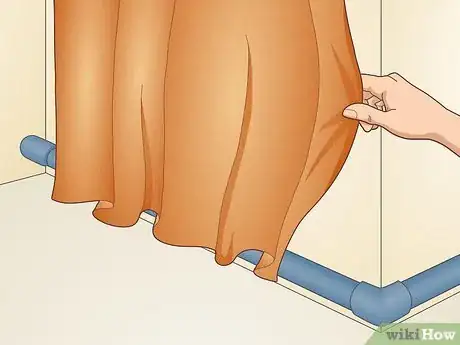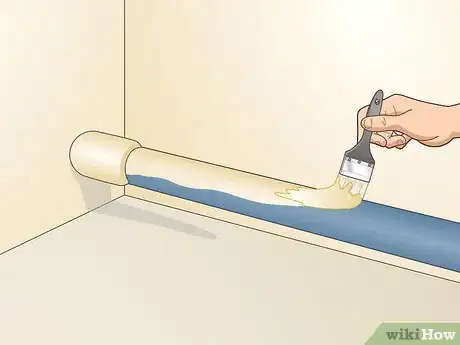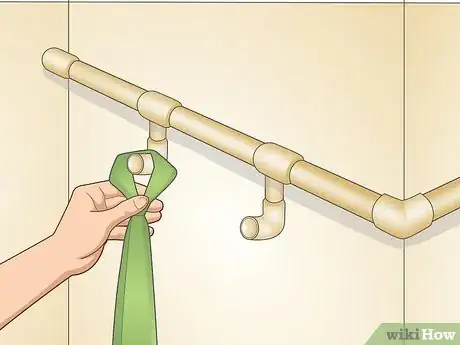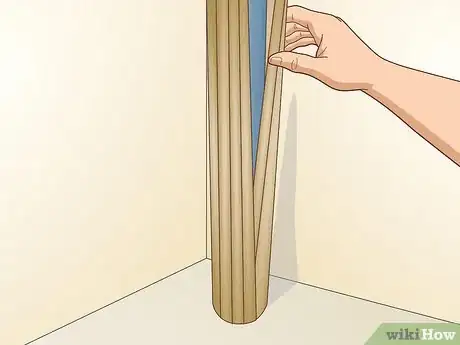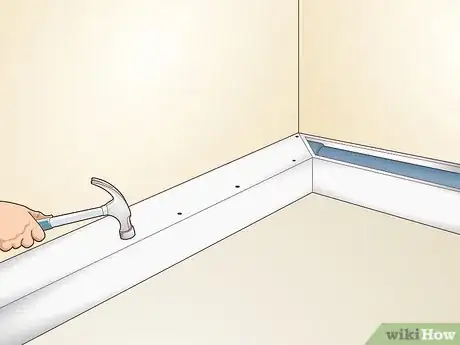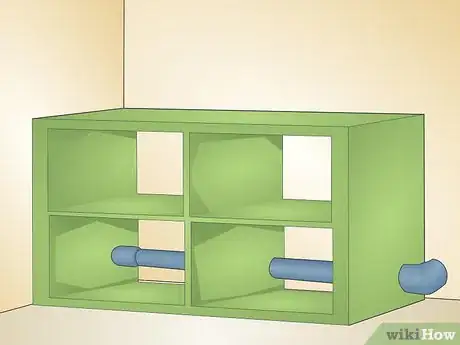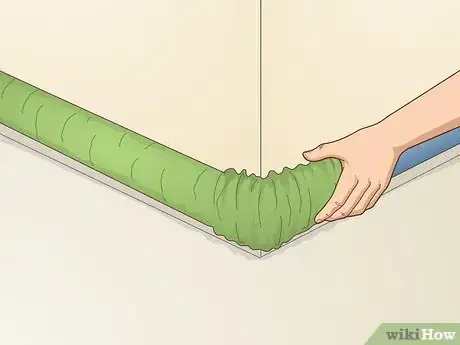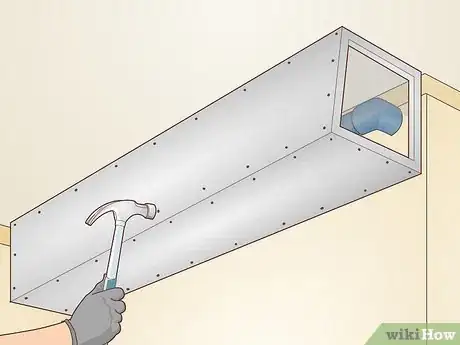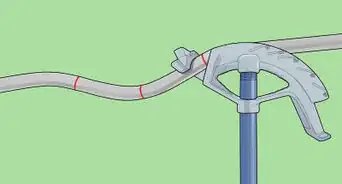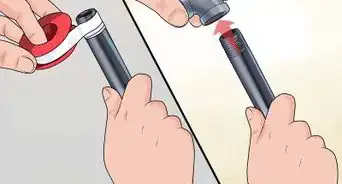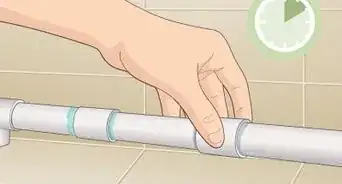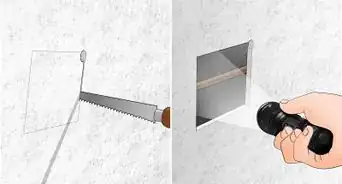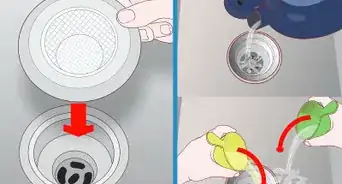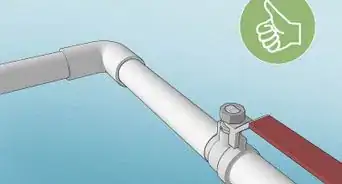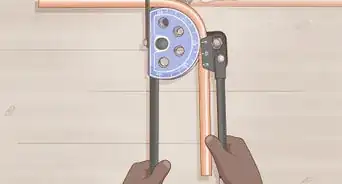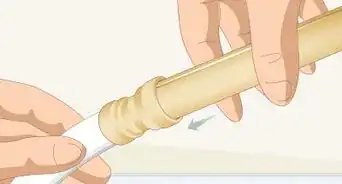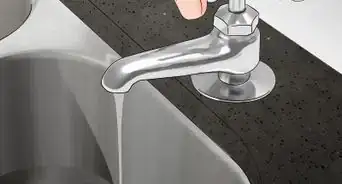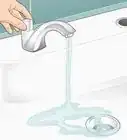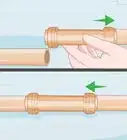This article was co-authored by Kanika Khurana and by wikiHow staff writer, Jessica Gibson. Kanika Khurana is an Interior Designer and the Owner of Kanika Design. With over 12 years of experience, Kanika specializes in remodeling, refurnishing, and color consulting. Kanika holds a Bachelor’s Degree in Psychology from San Francisco State University, a Redesign and Home Staging Certification, and an Associate Degree in Business Administration from Cañada College.
There are 9 references cited in this article, which can be found at the bottom of the page.
This article has been viewed 38,366 times.
Pipes in your living space might be a necessity, but they don't have to be an eyesore. Whether the pipes are in your bathroom, kitchen, or living room, you have lots of decorative options for concealing them. Although painting pipes is a popular, inexpensive solution, you could also cover them with a material that blends into the rest of the room or embrace the pipes and make them a focal point of your space. To learn about creative and attractive solutions for hiding those exposed pipes, read on!
Steps
Trying Decorative Solutions
-
1Arrange houseplants in front of the pipes to conceal them. Plants are a great way to hide indoor pipes since you can easily move the pots if you need to access the pipes. You can also put tall plants in front of outdoor pipes so they grow and hide the pipes from view.[1]
- For example, hang potted houseplants to hide ceiling pipes or place potted plants on low shelves to conceal pipes that are low to the ground.
Tip: Ensure that you use plants that work with your lighting conditions. Read the care tags to find a plant that works with indoor lighting or partial sun, for instance.
-
2Hang a curtain or fabric in front of the pipes for easy access to them. You might want to hide the pipes but still be able to get to them if you need to shut off water, for instance. Instead of blocking off the pipes, hang hooks or a tension rod above the pipes and slide a curtain or piece of fabric on the rod. You can match the fabric to the style of the room so it blends in easily.[2]
- If you're hiding pipes under a sink, you may be able to find sink skirts for sale or make your own.
Advertisement -
3Highlight the pipes instead of trying to hide them. Remember that you don't have to conceal your pipes! Instead, leave the pipes exposed to make them a focal point of the room, especially if you have a large pipe in your living space. Use bold, large decorations to give your room an industrial design theme that doesn't feel like it's competing with the pipes.[3]
- For example, if you have brick walls, leave them exposed and hang a large, bright piece of artwork. Then, choose a lighting feature that matches the style of your pipes to bring the room together.
- If you're doubling down on the pipes and want to bring your eye up to them or anywhere in the room, just simply paint them to a complimentary color and make them part of your intentional design.
-
4Paint the pipes so they blend into the wall color. Apply a latex-based paint primer to the pipes and let them dry. Then, paint the pipes with a color that matches the wall or a neutral color that doesn't stand out. For example, if you're walls are yellow, choose a yellow to match or pick a complementary cream or white color.[4]
- If you're painting PVC pipes, sand them lightly and wipe them down so the paint clings to the plastic.
- Some hardware or home improvement stores sell paint designed specifically for radiators, which can withstand heat and moisture.
Variation: Instead of trying to hide the pipes with a neutral color or a shade that blends in, choose a bold, bright color that will really stand out. This works really well if your space needs a pop of color. You could use a primary color or go for a shiny, copper shade, for instance.
-
5Add joints to create a pipe structure that you can hang things from. If you have exposed pipes on a kitchen wall, in a utility room, or in a bedroom, buy a few small pipe fittings that you can bond to the pipes. Make the pipes connect using 90-degree joints so you can hang things from the pipe structure.[5]
- This looks especially great if your pipes are made of copper or brass since they really stand out.
- Purchase solderless copper bonding, which keeps the pipes in place. If you're not comfortable working with the pipes, hire a plumber who can quickly solder them in place.
Covering the Pipes
-
1Apply a wooden or bamboo pole cover to make a pipe look like a column. If you don't want the hassle of painting the pipes or building a cover around them, buy a pole cover. These come in different materials and finishes so you can cut them to size. Then, wrap the cover around the pole so it looks like a stylish column.[6]
- Most of these covers also come with decorative bases that you can apply to the bottom and top of the pole to give it a finished appearance.
-
2Build a drywall box around the pipes to completely enclose them. Construct a drywall box directly around the pipes so it connects to the walls. Then, you can paint the box so it blends into the wall. This is a great option if you don't need to ever access the pipes.[7]
- Avoid covering up pipes that produce heat, such as a radiator since you don't want to start a fire.
-
3Create a shelving unit around the pipes to make a storage system. Build a metal or wooden shelving unit next to the pipes. Depending on your space, you could also construct the unit so it is in front of or on top of the pipes. The shelves not only hide the pipes but give you extra storage space.[8]
Tip: Create bookshelves out of your new storage space if it's in a living room or bedroom. If you've made storage in a utility room, laundry room, or bathroom, use the storage for cleaning supplies.
-
4Wrap fabric or rope around each pipe for a quick, inexpensive cover. If you don't want to permanently hide the pipes or make expensive coverings, fabric is a great option. Purchase fabric in a print or shade that matches the decor of your room. For a nautical look, buy manila rope. Then, tightly wrap the fabric or rope around the pipe, working from the bottom to the top. Tie a knot at the top and weave the ends in.[9]
- If the pipe that you're hiding is hot to the touch, avoid wrapping it with fabric. Instead, wrap it with rope to insulate it.
-
5Install drywall or hire a contractor to hide ceiling pipes. Exposed overhead pipes can be trickier to hide since you can't simply decorate around them. If you don't want the pipes visible at all, install drywall sheets that you can paint over. If you don't have the equipment for installing drywall, hire a local contractor, who can easily mount the drywall for you.[10]
- Keep in mind that installing drywall will make the ceiling lower, which can make your room look smaller.
Warnings
- Never block fire sprinkler systems. If you're unsure whether or not you can hide or adjust a pipe, contact your plumber first.[11]⧼thumbs_response⧽
References
- ↑ https://homebnc.com/best-outdoor-eyesore-hiding-ideas/
- ↑ https://www.shelterness.com/cute-hidden-storage-idea-diy-sink-curtains/
- ↑ https://www.elledecor.com/design-decorate/interior-designers/g29960737/industrial-design-tips/
- ↑ https://www.domino.com/content/how-to-hide-ugly-things-in-home/
- ↑ https://worstroom.com/how-to-hide-exposed-pipes/
- ↑ https://youtu.be/KEWpkIXmeHY?t=151
- ↑ https://worstroom.com/how-to-hide-exposed-pipes
- ↑ https://worstroom.com/how-to-hide-exposed-pipes
- ↑ https://www.apartmenttherapy.com/how-to-insulate-hot-pipes-with-rope-15526
